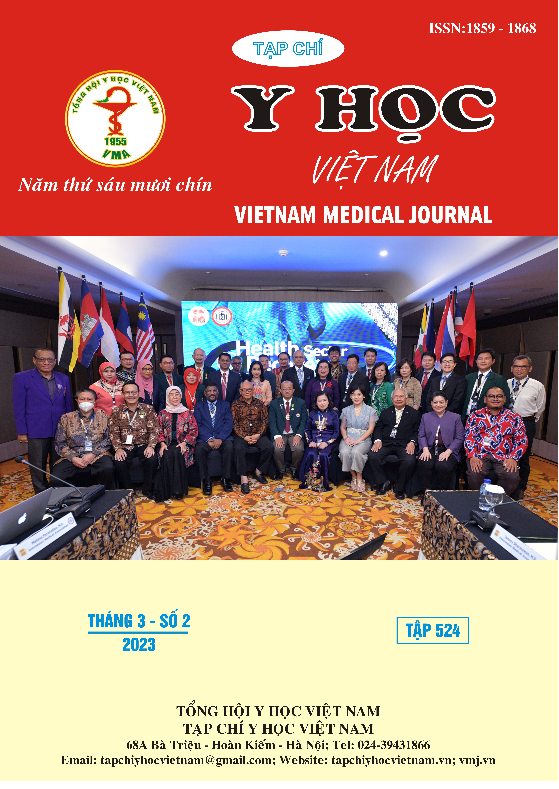PRIMARY MANDIBULAR RECONSTRUCTION WITH THE TITANIUM HOLLOW SCREW RECONSTRUCTION PLATE AND PEEK (POLYETHER ETHER KETONE)
Main Article Content
Abstract
Objective: To determine the clinical, pathological of tumor and evaluate the results of treatment by surgery Primary maxillectomy defect Reconstruction with the Titanium Plate, scapula flap and PEEK (Polyether Ether Ketone) in maxillectomy defects. Patients and Methods: A Prospective cross-sectional descriptive study, performed on 29 patients with tumor whom were diagnosed and treated at The Otolaryntology Department of K Hospital from October 2020 to October 2022. Data Collected of patients including ages and gender as well as chracteristics of tumors such as location, size, clinical stages and surgical methods. The histological classification were types, grades, TNM stages according to the American Joint Committee on Cancer (AJCC), 9th Edition (2021). About the Flaps status were evaluated post operative and follow-up theocclusion and immediate stability of the reconstructions. Results and Conclusions: maxillectomy defects is frequent in old age patients with an everage of 53 ± 0,13 years old. The ratio of male / female is 1,23, bad habits such as alcohol (72,4%), smokes (51,7%), maxillectomy defects mainly located on: ablation class III (48,7%), class III (20,7%), class II+subclass f (17,2 %), class III+subclass z (10,4 %). Pathological mainly of squamous cell of oral cavity 51,8%, sarcom 24,1%. The surgical methods are mainly used with wide resection and recontruction the defects with Titan Plate + perforator flaps and scapular flaps (51,7%); TitanPlate (44,8 %); Implant PEEK (3,5%). About the Flaps status were evaluated post operative: good (89,7%), flap necrosis < 1/3 (0%), totalflap necrosis (6,7%), Incision status, good (93,3%), failure (10,3%). The follow up patient shows preserved occlusion (87,2%), little malocclusion (17,2%).
Article Details
Keywords
maxillectomy defect; maxillectomy defect reconstruction
References
2. Mara C Modest 1, Eric J Moore 1, Kathryn M Van Abel 1, et al. Scapular flap for maxillectomy defect reconstruction and preliminary results using three-dimensional modeling PMID: 27730644. DOI: 10.1002/lary.26351
3. Fu K. Liu Y. Gao N. et al. Recontruction of maxillary and Orbital Floor Defect With Free Flap and Whole Individualized Titanium Mesh Assisted by Computer Techniques J Oral Maxillofac Surg. 2017;75 (1791.e1-1791.e9)
4. Brown JS, Rogers SN, McNally DN, Boyle M. A modified classification for the maxillectomy defects. Head Neck 2000; 22:17-26.
5. Cordeiro PG, Santamaria E. A classification system and algorithm for reconstruction of maxillectomy and midfacial defects. Plastic Reconstr Surg 2000; 105:2331-2346, discussion: 2347-8.
6. Okay DJ, Genden E, Buchbinder D, Urken M. Prosthetic Guidelines for surgical reconstruction of the maxilla: a classification system of defects. J Prosthet Dent 2001; 86:352-63.
7. Bidra AS, Jacob RF, Taylor TD. Classification of maxillectomy defects: a systemic review and criteria necessary for a universal description. J Prosthet Dent 2012; 107:261-70.
8. Alwadeai MS, Al-Aroomy LA, et al. Aesthetic reconstruction of onco-surgical maxillary defects using free scapular flap with and without CAD/CAM customized osteotomy guide. Surg. 2022 Oct 19;22(1):362. doi: 10.1186/s12893-022-01811-9


